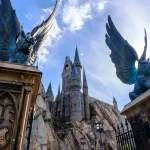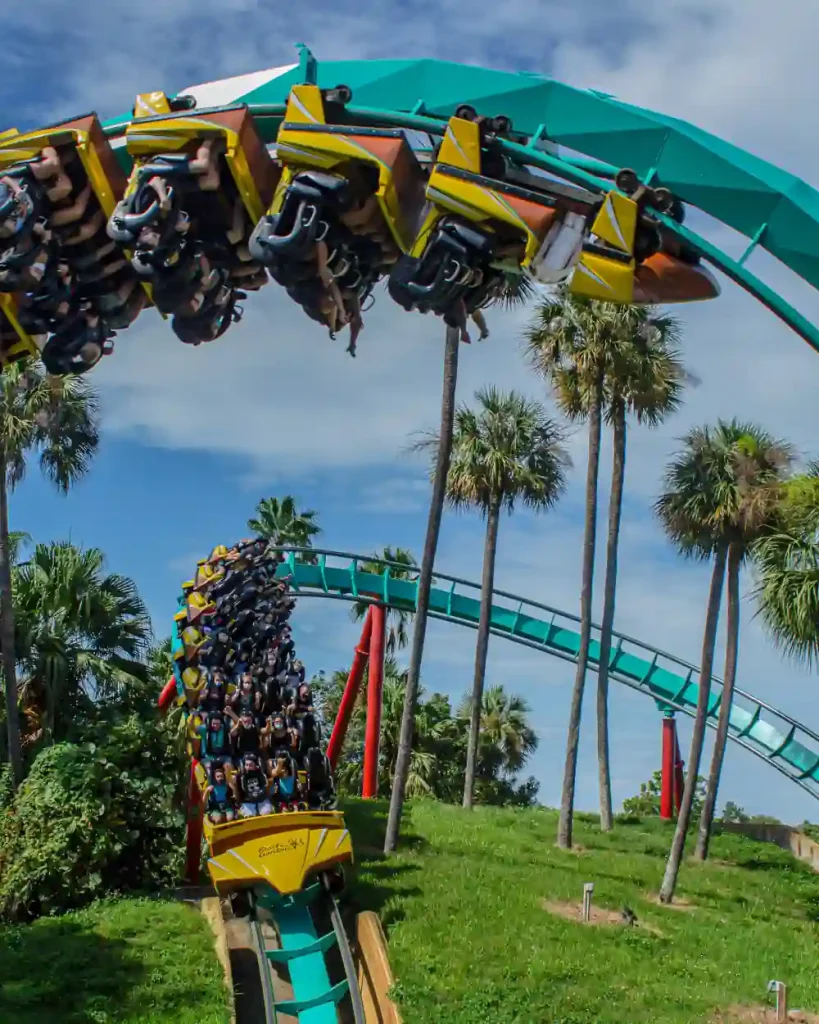Using Cash in Florida
By James | Last updated August 18, 2023
This page may contain compensated affiliate links. Please read the Disclaimer for more information
All dollar bills (notes) are exactly the same size and traditionally they were all basically the same green colour which can still lead to confusion so be careful when handing over bills or receiving change.
To help combat counterfeiters the US Treasury have started to use colour-shifting inks starting with the $20 bill in 2003, $50 bill in 2004, $10 bill in 2006 and the $100 bill in 2007. There are no plans to update the $5, $2 or $1 bills at this time and all the old style bills are still valid.
In October 2013, a new $100 bill was introduced which features a number of changes including raised printing. The bill still features Benjamin Franklin but like the other new denominations it nows has a little colour. Of particular note is a copper coloured inkwell with a colour shifting bell motif and a colour shifting number 100 denoting the value.
There is also a distinctive blue holographic dashed line running top to bottom which displays either a Liberty Bell or the number 100 depending on how you view it.
The dollar bills come in denominations of $1, $2, $5, $10, $20, $50 and $100 though the $2 bill is rarely seen. A dollar is often called a buck.
Coins in regular circulation consist of the:
- copper 1¢ (penny)
- silver 5¢ (nickel)
- silver 10¢ (dime)
- silver 25¢ (quarter)
- gold $1 (new dollar coin), though these are not often found in general circulation
It is worth keeping a handful of quarters in your car for paying tolls on some roads where they have automatic toll booths.
Do not take foreign cash; i.e. Sterling or Euros, as it will be difficult to convert this into Dollars.
State Quarters
In 1999 the US Mint started a series of 50 State Quarters that have now been issued at the rate of five new designs per year. Each State has its own design on the quarter, the State Quarter for Florida was released in April 2004.
This was followed by a District of Columbia coin and five US territories.
America the Beautiful Quarters
As well as the State Quarters, the US Mint also issued a set of 56 quarters (one from each state, the federal district and each US territory) commemorating national parks between 2010 and 2021. The last one was the Tuskegee Airmen National Historic Site in Alabama.
The Florida America the Beautiful Quarter is of the Everglades National Park and features an Anhinga and a Roseate Spoonbill.
Upcoming designs will feature American Women quarters from 2022 to 2025, a special series commemorating the United States Semiquincentennial in 2026 followed by youth sports from 2027 to 2030.
Presidential $1 Coins
After the State quarters, the US Mint introduced a new $1 coin just before President’s Day in 2007. Unlike earlier silver dollars (see below), this time it was a gold coloured coin featuring George Washington on one side and the Statue of Liberty on the other side.
The intention was to feature a different former president every three months in the order in which they served and the series ran up until 2016. Only presidents who had been deceased for at least two years were considered so more recent presidents have been omitted.
The second coin in the series featuring John Adams was issued in May followed by Thomas Jefferson and James Madison.
In 2008, the coins represented James Monroe, John Quincy Adams, Andrew Jackson and Martin Van Buren. The presidents featured in 2009 were William Henry Harrison, John Tyler, James K. Polk and Zachary Taylor.
Uptake has not been very good and from 2011 onwards they were only issued in limited numbers for collectors. The most recent president to be included is George H. W. Bush (41st president) and that design was minted in 2020.
A set of $10 gold Presidential “First Spouse” coins have also been issued and again the most recent is Barbara Bush, wife of George H. W. Bush.
Native American $1 Coins
In 2009 the US Mint announced a new series of $1 coins celebrating the important contributions made by Native American Indian tribes. The plan was to mint one new Native American $1 coin each year in conjunction with the four presidential $1 coins.
The first coin featured a Native American woman planting seeds in a field of corn, beans and squash. The obverse design was similar to the “Sacagawea” design first produced in 2000 (see below).
Earlier $1 Coins
The two previous attempts to introduce a $1 coin have been largely unsuccessful. Both the Susan B. Anthony and Sacagawea dollar coins were not accepted by the public but for the initial presidential series, the Mint ordered 300 million of the George Washington dollar coins to increase potential circulation. However some banks did not bother to order any of the coins featuring John Adams as they still had stocks of the George Washington coin.
The Susan B. Anthony dollar was introduced in 1979 but was easily confused with a quarter. The second attempt, the Sacagawea was introduced in 2000 and was slightly larger and thicker than a quarter.
All the new $1 coins are the same size as the Sacagawea and can be used in any vending machine that accepts the earlier dollar coin.
The hope is that the coin will be adopted by other organisations such as parking meter companies.
There are still doubts as to whether it will succeed as there are no plans to withdraw the $1 bill and both the $1 bill and the $1 coin will be in circulation at the same time.
The only time you are likely to come across $1 coins is as change from a vending machine such as some of the lockers found at theme parks.
Florida Theme Parks
Theme Park Ticket Guides
Popular Articles







![Beauty and the Beast topiary at Disney Epcot [© 2019, floridareview.co.uk, all rights reserved]](https://floridareview.co.uk/wp-content/uploads/2018/10/beauty-beast-topiary.jpg)







